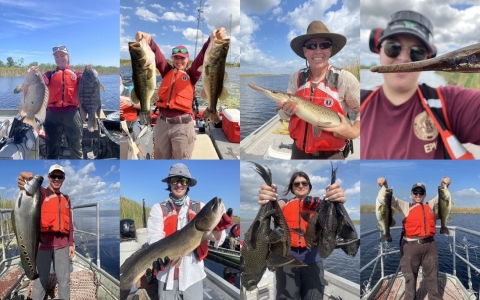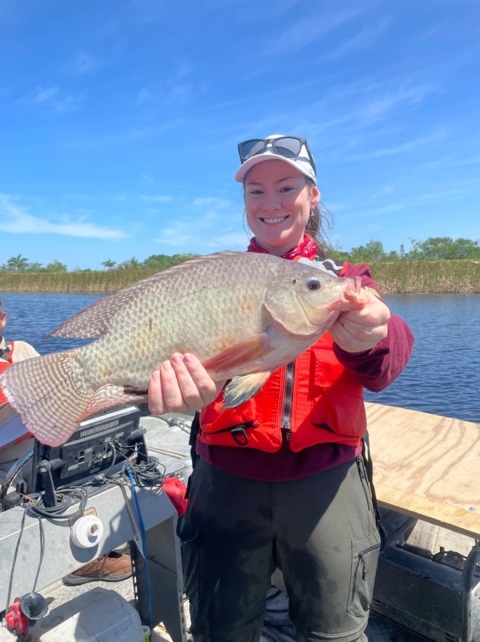During the weeks of March 18th and 25th, 2024, Region 4 Fish and Aquatic Conservation (FAC) Program staff from the Peninsular Florida Fish and Wildlife Conservation Office (FWCO), with support from the National Wildlife Refuge (NWR) System Inventory and Monitoring Program, completed the second of a two-part comprehensive fish inventory assessment of the Arthur R. Marshall Loxahatchee NWR. This refuge protects 145,188 acres, or 226 square miles, of Everglades ecosystems including a mosaic of wet prairies, sawgrass ridges, sloughs, tree islands, cattail communities, and a 400-acre cypress swamp. The last comprehensive fish inventory assessment of Loxahatchee NWR was completed by Region 4 FAC in 2011.
The two week-long electrofishing surveys, focused on of the Refuge’s 57-mile-long perimeter canals (L-7, L-39 and L-40), were conducted using three FAC electrofishing boats with the goal of determining the population structure of native and nonnative fish species inhabiting the waters of the Refuge. The recently completed surveys captured fishery data during South Florida’s “dry” season, with part one “wet" season completed in September of 2023, with the goal of capturing data during both of South Florida’s sub-tropical climatic seasons. For this survey the perimeter canals at Loxahatchee NWR were broken down into ninety-four 1-Km segments with survey locations randomly selected for each day. During each season of the study forty-three 1-Km sections were surveyed, representing over half of the Refuge’s perimeter canals. Information on water quality parameters, habitat characteristics, and morphometric data on all fish were collected. All native fish were released unharmed after data collection while non-native exotic species were removed from the Refuge. Following this two part electrofishing survey over 1000 lbs. representing 12 species of non-native fish were removed from Refuge waters. The results from this study will help determine changes in native and non-native fish populations compared to the last comprehensive survey from 2011.
As these surveys are labor intensive, and provide opportunities for cross-program training, FAC staff received assistance from Loxahatchee NWR staff, volunteers, and American Conservation Experience (ACE) interns, staff from the Miccosukee Tribe of Indian of Florida’s Fish and Wildlife Department, as well as Florida Fish and Wildlife Conservation Commission.






